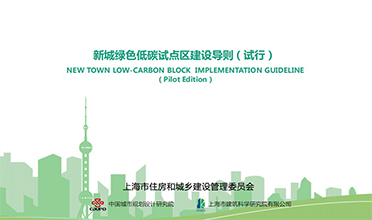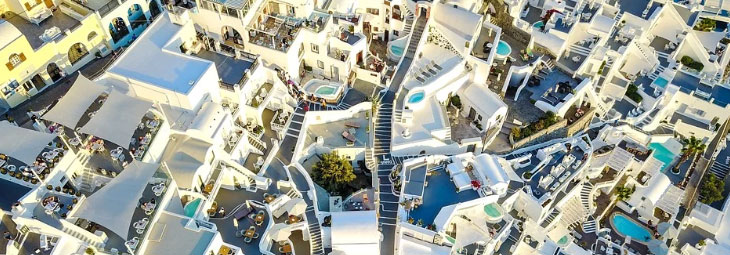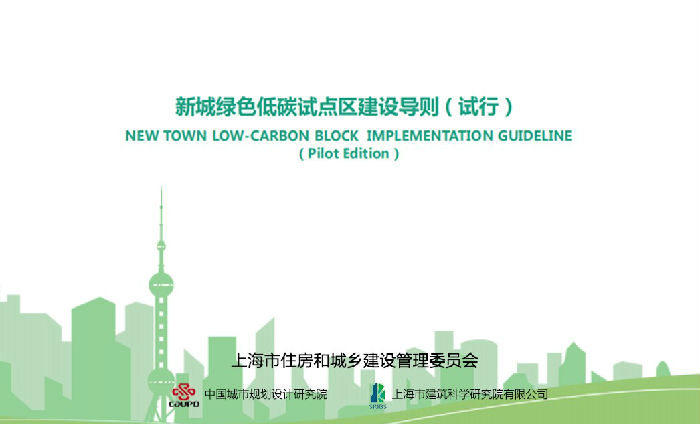



3 Green, low-carbon, high-quality buildings
3.1 Overall requirements
The guidelines advocate the use of green building technologies to build high-quality low-carbon building demonstration areas. Specific measures include the following: 1) enhance the low-carbon target requirements for buildings, 2) design and build ultra-low energy consumption buildings, 3) make reasonable use of certified green building materials and promote recycling of building materials, 4) promote the concept of integrated design and increase the construction of assembled buildings to achieve low consumption, low emissions, high quality and high efficiency in the construction process.
3.2 Good quality green buildings
1) Reasonable targets for green building construction
The guideline requires new civil buildings to achieve two-star or higher green building standards. It also promotes the full implementation of the three-star green building standard for new large-scale public buildings. Furthermore, it requires full establishment of green construction, namely the energy-saving and consumption reduction during construction. By actively creating green model construction sites, the guideline encourages a 90% coverage of the green construction in the new city. A green building operation labeling system was developed to aid the green building development. For existing old buildings, it is advisable to implement green renovation of existing buildings in accordance with the "Implementation Rules for Green Renovation Assessment of Existing Buildings in Shanghai (Provisional)" and the "Shanghai Catalogue of Applicable Technologies for Green Renovation of Existing Buildings" requirements.
2) Use of ecologically green building techniques
The guideline promotes the creation of high-quality, high-standard green buildings and the enhancement of the construction of new buildings. It evaluates green building performance in five dimensions, including safety and durability, health and comfort, the convenience of living, resource conservation, and environmental livability. It suggests the selection of appropriate technologies that match Shanghai's climate characteristics, plot features and building typology.
3.3 Building technologies for low carbon demonstration
1) Planning and construction of ultra-low energy buildings according to local conditions
The guideline follows the principle of "passive priority, active optimization", taking indoor environment and energy consumption targets as the constraint, and using performance-based design methods to rationalize technical strategies. Specifically, it gives priority to passive measures such as external sun shading, energy-efficient windows and doors, and thermal insulation of the envelope, to reduce the heating and cooling needs of buildings. And in combination with energy-efficiency improvements in equipment and the use of renewable energy, such a principle promotes a significant reduction in building energy consumption. The guideline promotes ultra-low-energy buildings on a large scale, requiring the implementation of ultra-low-energy building standards in new civil buildings to reach 25% of the building surface and proportion. It requires the promotion of the construction of at least one demonstration area for ultra-low energy buildings and piloting near-zero energy buildings and zero-carbon buildings in projects where feasible. At least one demonstration project is required accordingly. Innovation in technical systems is also required by the guideline, specifically, the construction of no less than one pilot PEDF(Solar photovoltaic, Energy storage, Direct current and Flexibility) building is required.
2) Strengthen the quality control of the whole process of ultra-low energy buildings
The guidelines suggest the implementation of stricter construction quality standards by following the concept of fine-tuned construction. For construction quality control, special construction plans should be formulated for key aspects such as thermal bridge control and airtightness assurance. The construction quality should also be guaranteed by refining construction techniques and carrying out strict process control. Ultra-low energy buildings should be fully renovated and prevent damage to the airtight layer of the building envelope and the impact on airflow caused by renovation.
3.4 Resource-using building materials
1) Encourage the resourceful use of construction waste
The guidelines require the prediction of construction waste production and propose solutions for the reuse of different types of construction waste, including the reasonable layout of construction waste collection points and reuse sites and the selection of appropriate construction waste treatment processes and other measures. The construction unit of the construction project should implement the relevant planning requirements. On the premise that the technical indexes meet the design requirements and satisfy the use function, the construction project should select the recycled construction waste.
2) Reasonable use of green building materials with product certification
The guidelines require construction units to use "energy saving, emission reduction, safety, convenience, recyclable" characteristics of building materials. In the use of ready-mixed concrete, ready-mixed mortar, autoclaved pressed concrete block materials, construction units should choose green building materials with appropriate logo.
3.5 Efficient and collaborative assembled construction
1) Fully promote the development of assembled buildings
The guidelines encourage new assembled buildings to achieve a high assembly rate, and the assembled building area (45% of the single prefabricated rate or 65% of the assembly rate) should reach 10% of the total building area. The guidelines also actively promote the concept of integrated design in line with the characteristics of assembled buildings, advocate the use of integrated design and construction of general contracting mode, and actively promote the synergistic development of intelligent construction and building industrialization, and promote pilot projects.
2) Promote all types of assembled buildings according to local conditions
The guideline suggests a subdivision of building types, requiring the application of assembled steel structures and combined steel-concrete structures in public buildings such as schools, hospitals, and industrial plants; in residential buildings, the application of assembled steel structures is encouraged.
3) Promote the implementation of fully furnished apartments
The guideline proposes that full renovation technology should be implemented in new residential buildings, especially in residential areas such as talent flats and rental housing, in order to effectively enhance the efficiency of industrialized renovation implementation.
Source: <https://zjw.sh.gov.cn/jsgl/20220301/4f85d9ad98954bee9004a0d6d529f086.html>
Edited and translated by Hou Ying